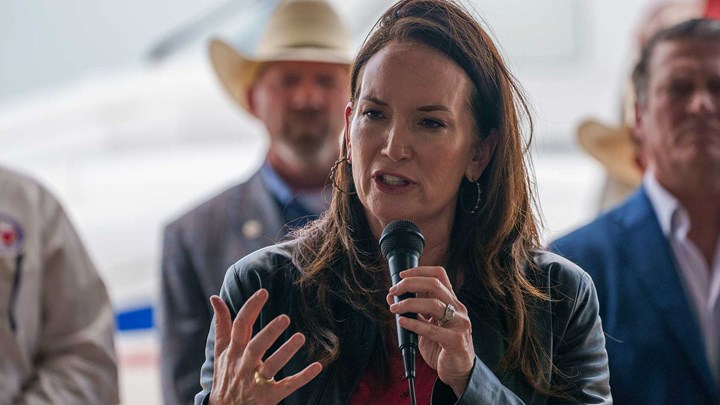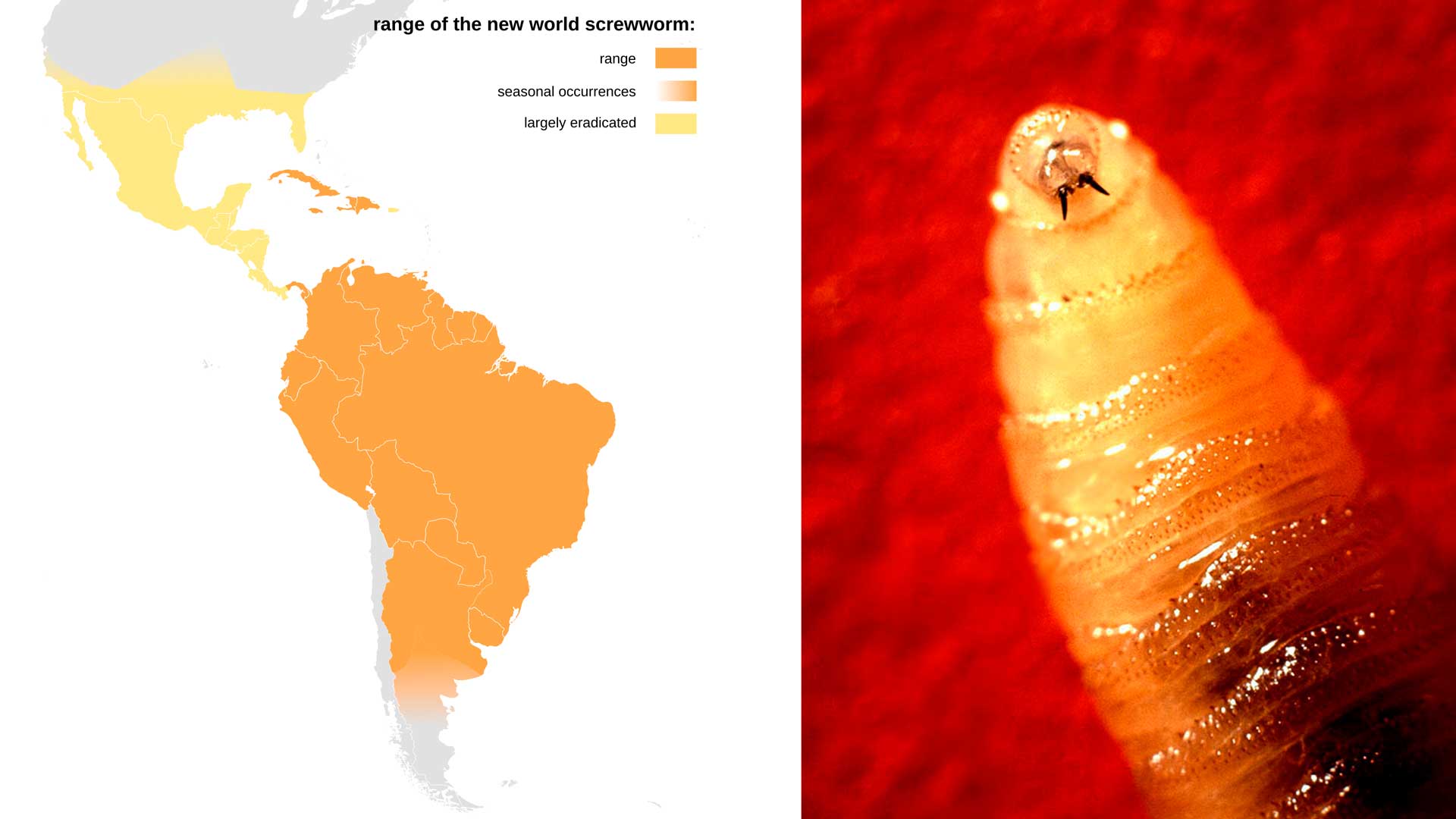
by Mark Chesnut - Tuesday, September 30, 2025

Above: U.S. Department of Agriculture (USDA) Secretary Brooke Rollins addressed the issue at a Texas news conference, estimating that a screwworm outbreak could cost America's largest cattle-producing state as much as $1.8 billion in livestock losses, labor costs and medication expenses.
A dangerous parasite that has Texas wildlife officials concerned about wildlife populations and livestock herds in the state has been found in a human thousands of miles away in Maryland.
According to media reports, on Aug. 24, the U.S. Department of Health and Human Services (HHS) announced the first human case in the United States of travel-related New World screwworm, a flesh-eating parasite. The patient recently traveled from El Salvador, a country where the parasite is known to be present.
In an email to Reuters, HHS spokesman Andrew G. Nixon said the risk to public health in the United States from this introduction is “very low.”
New World screwworms (NWS) were recently discovered in a horse in the Mexican state of Oaxaca. Prior to that, an infection was found in a cow at a detection checkpoint in the southern Mexican state of Chiapas. The discovery follows the northward spread of NWS through both South and Central America and has raised concerns in the Lone Star State.

According to J. Hunter Reed, wildlife veterinarian for the Texas Parks & Wildlife Department (TPWD), the parasite was once a major problem in the United States, but through expensive efforts by federal and state animal health officials, livestock producers and veterinary practitioners, it was eradicated from the country in 1966. Since then, in the Americas, it has been mostly limited to Panama.
New World screwworms are larvae or maggots of the NWS fly that cause a painful condition called NWS myiasis. NWS flies lay eggs in open wounds or openings of live tissue, such as nostrils, eyes or mouth. When the eggs hatch into dangerous parasitic larvae, the maggots burrow or screw into flesh with their sharp mouth hooks.
Wounds can become large, and an infestation can cause serious, potentially deadly harm or even death to the infected animal. NWS primarily infests livestock but can also affect wildlife, including deer and birds.
The recent fast movement north has worried both agricultural and wildlife officials. As most hunters know, Texas is known for its white-tailed deer hunting, and a big outbreak of the parasite could cause serious problems for the state’s deer population.
“There's a large concern, especially on the deer side of things although it is not deer specific—it can be any mammal,” TPWD’s Reed said.
NWS infestations begin when a female NWS fly is drawn to the smell of a wound or natural opening on a live, warm-blooded animal, where she then lays her eggs. These openings can include wounds as small as a tick bite, nasal or eye openings, the navel of a newborn or genitalia.
A single NWS female fly can lay up to 300 eggs at a time and as many as 3,000 during her lifespan. Eggs hatch into maggots that burrow into a wound to feed. After feeding, the larvae drop to the ground, burrow into the soil and emerge as adult NWS flies. Adults are capable of flying long distances, and the movement of infested livestock or wildlife can accelerate the spread.
The current method to control the parasite, which also successfully eradicated the NWS in the United States 60 years ago, is to flood infested areas with sterile male flies of the same species.
Confirmation of the screwworm case in Maryland came just a week after U.S. Department of Agriculture (USDA) Secretary Brooke Rollins traveled to Texas to announce plans to build a sterile fly facility there as part of efforts to combat the pest.
Besides threatening Texas whitetails and exotic big game, the parasite also could harm the livestock industry. The USDA estimates that a screwworm outbreak might cost Texas—the largest U.S. cattle-producing state—around $1.8 billion in livestock losses, labor costs and medication expenses.
Clinical signs of NWS myiasis in cattle and wildlife include irritated or depressed behavior, loss of appetite, head shaking, smell of decaying flesh, presence of fly larvae (maggots) in wounds and isolation from other animals or people. Reed said TPWD relies on hunters, who spend more time in the field than most other Texans, to stay alert for possible NWS infections in wildlife, especially deer.
“For hunters and also landowners, what we're saying is that if you manage to harvest an animal or if you see an animal on your property with clinical signs—that could be festering wounds, animals with lameness, discharge from the body or nose—they should call either their wildlife biologist or game warden,” Reed said. “That information will come to our wildlife health specialists and veterinarians on staff, and we can work to investigate the matter.”
E-mail your comments/questions about this site to:
[email protected]
Proudly supported by The NRA Foundation and Friends of NRA fundraising.
